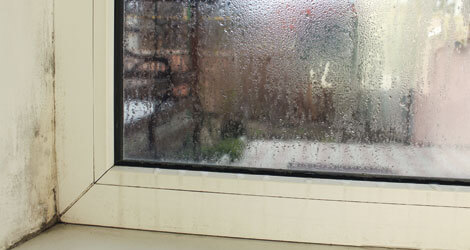By Kiran Sagoo on Mon 28 November 2022 in Blog
How Does Ventilation Prevent Condensation?

Condensation stems from many things in buildings, such as showering, cooking and doing your laundry. And in any type of building, you’ll find that wet rooms (kitchens, bathrooms, ensuites and utility rooms) are the most susceptible to excessive condensation build-up. Therefore, they’re more prone than any other room to mould growth and it’s no secret that mould damages walls, ceilings, and fixtures. But are you aware it can also damage your health as mould increases the chances of respiratory problems, allergies, and a weak immune system?
What is condensation?
Condensation occurs when humid air meets a cold surface and is in the form of little droplets. For example, you may notice condensation build-up on windows whilst you are showering due to the heat emitted from the shower combined with the cold temperature of the window.
What is ventilation?
Ventilation is a process of removing stale, humid, and odorous air that’s in a building and replacing it with outdoor air. This is where passive ventilation and/or mechanical ventilation come into play.
The fact is that many of us don’t realise the effect condensation has on buildings and our health, and therefore don’t know the steps to improve Indoor Air Quality (IAQ). But with the updated government regulations there is now more being done to ensure buildings have sufficient ventilation – especially due to homes becoming more airtight and the push for a Net-Zero culture.
Types of ventilation to prevent condensation
Before we had mechanical methods of ventilation, we would rely on open windows and air leakage through cracks in the exterior of the building. But does this reduce condensation?
The answer is yes, but it doesn’t do enough and therefore we need mechanical methods to help. With advanced technology and government regulations in the mix, extractor fans are one solution to preventing condensation. A classic method of ventilation that has the provision of ON-OFF and can be either continuous or intermittent.
In conjunction, ventilation regulations for each type of extractor fan require a certain amount of extraction, measured by litre per second. You can find information on this here.
We also now have MVHR (whole-house ventilation) which is a method of ventilation that extracts indoor stale air and supplies clean filtered air from the outside that is warmed using heat from the indoor extracted air – generally implemented in Passive Housing as long as the unit is Passive House certified.
Both methods of ventilation give you ventilation control.
How does ventilation prevent condensation?
A well installed ventilation system will prevent condensation by removing excess moisture from the air before it has the chance to condensate on a cold surface such as a window, mirror, or wall.
Although vents in windows and walls allow moist air to escape, mechanical ventilation is a more efficient way to prevent condensation. This is due to the use of pressure and suction to force stale air out, and in the case of MVHR, bring fresh filtered air in.
How does MVHR prevent condensation?
So how does MVHR work against condensation?
Firstly, it’s a whole house ventilation solution, so no room goes un-missed.
As well as removing humidity from a building/room by ventilating it, MVHR also ensures there is no heat loss. Due to this the room will maintain a consistent temperature and therefore condensation is less likely to form as the room temperature would not be cold enough to allow it to occur.
This is the crucial difference between MVHR and regular mechanical ventilation. Not only are MVHR systems more effective against condensation, but it’s also more energy efficient as the heat exchanger unit transfers waste heat from exiting air to incoming filtered air.
Preventing condensation is just one reason to consider installing MVHR in a building, you can read more about the benefits of MVHR here.
There are many ways to ventilate a building and the cost of ventilation varies and is dependent on factors like the age and size of the building. Furthermore, excessive condensation inside a building should not go unaddressed. Ignoring it can result in poor air quality, damage to the building and a host of many other issues.
If you need help identifying an appropriate method of ventilation for your building contact us and book a visit at our Air Academy or we’ll direct you to our preferred partner who can assist you.


